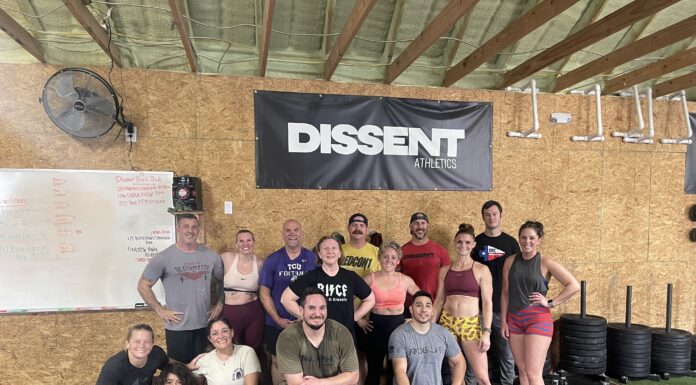Christopher Ohan
Kennedale News Note: Recently the Kennedale News posted “A Flash Back in Kennedale History” which featured this incident. It sparked interest and thanks to Ann Beck, who provided the link, this is a more complete story. It came from the Texas State Historical Association. It is a difficult read.
RED BALL GAS HOUSE EXPLOSION …
The Red Ball Gas House gas station was located about one mile south of Kennedale or four miles outside the Mansfield city limits and southeast of Fort Worth in Tarrant County on what is now U.S. Business Highway 287. Just before 7 p.m. on the evening of Wednesday, July 31, 1968, a tanker truck was refilling the ground-level storage tank at the service station when sparks from the truck set a small amount of fuel, which had overflowed around the storage tank from the transfer, on fire. According to the investigation conducted by Fire Marshal Mason Lankford, the driver’s attempt to spray away the spilled gasoline with a water hose only succeeded in spreading the gas fumes and vapors which were ignited when they reached the truck’s alternator. This fire quickly engulfed the tanker truck itself. Subsequently, the storage tank, which was divided into two compartments—one which held 3,000 gallons and the other which held 7,000 gallons—heated, and eventually the gasoline boiled and those vapors ignited the storage tank.
Responding to Kennedale’s request for help from nearby fire departments, members of the Mansfield Volunteer Fire Department arrived shortly after 7 p.m. with two 500-gallon tank trucks. Hubert Beard said later, “We thought what was burning was all that was going to burn, and we had it pretty much contained. What we didn’t know, was the tank was split into two containers and that the other part was full of boiling fuel.”
One of the first firemen on the scene, Mansfield Chief Harry Blissard was closest to the tank and manned the nozzle of a foam hose. After hearing a safety valve on the tank click, Blissard suspected the worst, turned off his hose, and ordered everyone back. Unfortunately, it was too late. At approximately 7:30 p.m., as Blissard was backing away and just as the Arlington Fire Department’s foam truck was moving into position, vapors from the boiling fuel in the 7,000-gallon storage tank, functioning like a fuse, caught fire and caused the tank to explode; a “great ball of fire” reached an estimated 175 to 200 yards in diameter as it shot out. Chief Blissard was thrown to the ground as the explosion melted his hat and singed his fire suit. Debris was spread over a 150-foot wide area. Eyewitnesses reported that the blast hurled the tank into the air (reports of the distance varied wildly from 100 feet to 200 feet, with some estimates even up to 500 feet), and it landed on a house trailer near the service station. Smoke coming from the flames could be seen as far as twenty miles away. According to news stories at the time, children who had been watching the initial blaze from the roof of a barn 200 yards away were blown off by the force of the explosion. That explosion was immediately preceded by approximately fifteen to twenty smaller blasts that were “like big firecrackers.” According to Fort Worth Star-Telegram reporter Jerry Flemmons:
The air bubbled with heat. Like a flaming ocean, rolling tidal heatwaves…. It seemed like hell, like the innards of an atomic bomb blast, like a rocket’s flaring tail, like a furnace, like an oven. The boiling air seared skin, singed hair, [and] ignited clothing.

Lynn Smith of Kennedale said, “Small spots of fire fell from the sky right after the explosion.” Tarrant County constable Fireman O. L. Watson was on his way to the fire when, from a distance of about a quarter-mile, he saw the Red Ball storage tank “go up like a rocket, about 300 feet or so, before it came down.” When Watson arrived at the scene, there were victims lying on the ground. He loaded five of the injured fire fighters, including Chief Blissard, into his car, and headed for John Peter Smith Hospital in Fort Worth. Afterward he said that as he “was putting some of the firemen into my car, I walked by a man all crumpled up. I didn’t even recognize him. They told me later it was [Mansfield fireman S. C. “Shirley”] Copeland.” Copeland was Watson’s next-door neighbor.
Moments before the explosion, KRLD-TV reporter-cameraman Steve Pieringer, who had a reputation for getting to the scene of a story early and had arrived when he heard of the initial fire, was changing a camera lens across Highway 287 from the Red Ball. The blast reached Pieringer, who, despite severe burns, continued walking toward the fire. According to Kennedale Volunteer Fire Chief Tom Lowery, Pieringer “walked about 60 or 70 yards down the highway and then collapsed. He was just a white ash from head to toe. All his clothes except his undershorts were burned off.”

Hubert Beard, who remained inside one of the Mansfield fire trucks to maintain water pressure by keeping the engine running, fell to the floor of the truck as the blast engulfed the vehicle. He was able to drive the truck 200 feet out of the fire. Suffering burns over most of his body as he returned to drag others to safety, Beard pulled burning clothes off of his fellow fireman or rolled them on the ground to extinguish flames. He recalled later:
The ones wearing the bunker coats—they were in the worse shape because the fumes blew up under the coat and into the uniform. I suppose that’s what helped me get through it—I had on overalls and [a] short-sleeve shirt.
Standing about three-fourths of a block from the Red Ball’s storage tank at the time of the explosion, Jack Marlow of Kennedale said the experience was other-worldly and described “screams from kids” and people “running everywhere” as the fire was “rolling and roaring across the ground.” In his account in the Fort Worth Star-Telegram he said, “I thought, ‘My God, this is like hell.’” He described the intensity of the fire:
Suddenly there was this whoosh. A big ball of fire covered the road and everywhere. A kid, real small, started hollering and ran in front of me. His shirt just started smoking and turned into fire. I grabbed him and ripped the shirt off. Their clothes were just turning into fire.

In addition to Kennedale and Mansfield, firemen from surrounding communities including Fort Worth, Arlington, and Forest Hill, responded to the Red Ball fire and subsequent explosion. One Mansfield and two Arlington fire trucks were destroyed in the explosion. With the assistance of area fire departments, the fire was extinguished by 8:05 p.m.
In all, thirty-one people were injured in the explosion. Six of those injuries were critical—three firemen, a reporter, and two children. With second and third-degree burns, Beard and Copeland, who had severe burns, were transported to All Saints Hospital in Fort Worth. Chief Harry Blissard and Steve Pieringer were eventually transferred to the Burn Unit at Parkland Hospital in Dallas. Copeland, Blissard, and Pieringer died from their injuries. Other firemen injured at the scene included T. G. Ackerman, who suffered burns on his hands and face; Dulen Bean, on his hands, face, and one leg; Hubert Beard, first and second-degree burns on both arms and face; Clifton Perry suffered third-degree burns on his arms and face; C. E. Pressley on his hands and one leg; and Mac Thompson, who had second-degree burns on his face and third-degree burns on his hands. Kennedale patrol officer Larry Young was also hospitalized with severe burns.
As a result of the Red Ball explosion, Tarrant County Fire Marshall Mason Lankford called on Tarrant County state representatives to introduce legislation in Austin outlawing the storage of gasoline in above-ground tanks. Governor Preston Smith signed a law prohibiting the storage of gasoline in large above-ground storage tanks. As a direct result of the Red Ball Gas House Explosion, it became illegal for any retail service station to store more than sixty gallons of flammable liquid above ground.
In the wake of the disaster, local media honored the memory of reporter Steve Pieringer by establishing the Steve Pieringer Award to be given to an “outstanding news person” of the Dallas-Fort Worth area. In 2017 fallen volunteer firemen Harry Blissard and S. C Copeland were honored as part of a memorial for first responders at the city hall in Mansfield. The Mansfield Historical Museum opened a fiftieth-anniversary exhibit on the Red Ball explosion in the summer of 2018.





































